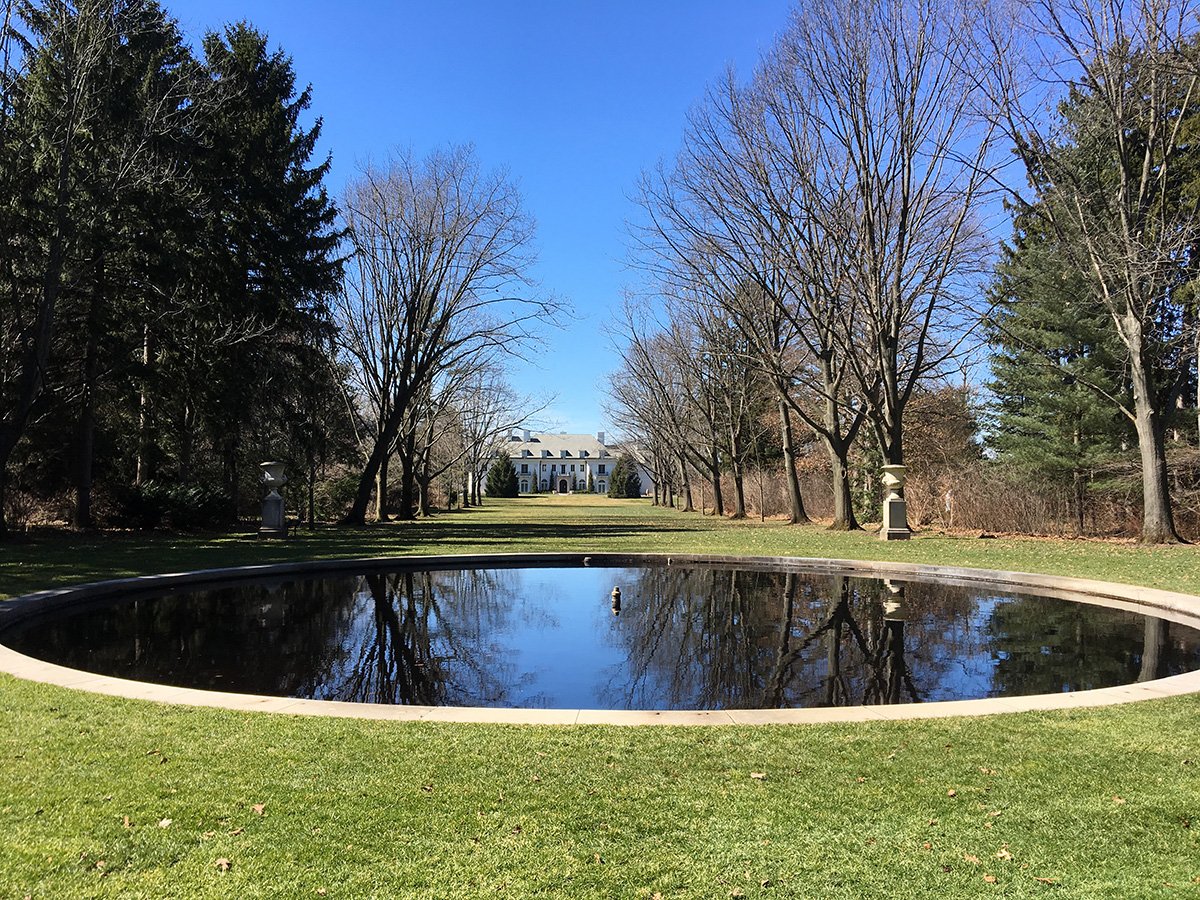21. Extraordinary Landscapes Being Restored and Opened to Public in Indianapolis
James Glass
Column that appeared in the Indianapolis Star onBetween 1900 and 1930, during what has since been called the “Country Place Era,” several wealthy Indianapolis families created extraordinary landscapes around their country houses. In the town of Woodstock, at West 38th Street and Michigan Road, banker Hugh McKennan Landon and his family constructed a French chateau for their home in 1912 and called it “Oldfields.” In the early 1920s, they retained the Olmsted Brothers, probably the most prestigious landscape architecture firm in the nation, to design a Ravine Garden on the hillside below the house. Percival Gallagher, one of the lead Olmsted designers, laid out a picturesque garden leading from the home down to the Central Canal, consisting of a stone-lined water course, limestone paths, and masses of plantings that promoted waves of color and texture. So impressed were the Landons with Gallagher’s work that they asked him to suggest a landscape treatment for the front approach to the house. The landscape designer suggested the present Grand Allee, consisting of a long lawn lined by elms and terminating in a distant pool with Classical sculpture in the background. In 1933, Josiah K. Lilly, Jr. and his family acquired Oldfields and lived there for another thirty years, maintaining the elegant quality of the estate. After the Lilly family gave the property to the Indianapolis Museum of Art in 1966, the cultural institution at first used the house as a decorative arts pavilion and maintained the Grand Allee as a pleasant vista.
During the 1990s, the museum decided to interpret the Oldfields residence and grounds as an expression of the American Country Place era. Mark Zelonis, Director of Oldfields and Gardens and Grounds, says that the museum was fortunate to find the original drawings, construction photographs, planting plans, and correspondence between the Landons and Gallagher at the former Olmsted Brothers office in Brookline, Massachusetts. They then discovered that George and Peggy Rapp, friends of the museum, appreciated the quality of Gallagher’s design for the Ravine Garden, which had become largely overgrown by the 1990s. The Rapps financed a careful restoration of the garden and endowed its maintenance, while the museum simultaneously restored the Oldfields house to its appearance in the early 1960s. In addition, the original rows of trees lining the Grand Allee and the natural gardens bordering the allee were restored. All the landscape restorations were carried out by Vermont landscape architect Patricia O’Donnell. Both Oldfields and its restored landscapes are now open and can be savored by the public.
Not far away, a second extraordinary landscape of the Country Place Era is being reclaimed and restored at Marian College. There one of the great Midwestern landscape architects of the early 20th century, Jens Jensen, designed a “driving landscape” on the 64-acre estate of automobile magnate James Allison in 1911-12. Jensen, known as the “prophet of the Prairie,” favored naturalistic designs for estates, using varied plants, artificial ponds, and large meadows to transform the farmland surrounding the homes of his clients. For Allison, he also provided curving drives on which his employer could tour the estate. In 1995 Professors Anne Hoover and Malcom Cairns and Research Associate Christina Jones of Ball State University discovered documentation of Jensen’s work at the Allison estate in a survey they compiled of historic designed landscapes in Indiana. By that point, much of Jensen’s naturalistic features had become overgrown and his connection to the property forgotten. Subsequently, Marian President Daniel J. Elsener decided to research what remained of the Jensen design. The college hired David Roth of Smock Fansler Construction Company to prepare a cultural landscape report on the Allison landscape, and Roth found that most of the original design survived, as well as original drawings and photographs. Deborah Lawrence, special assistant to Elsener, says that the college has embarked on an ambitious $5 million program to restore the 45 acres that it owns of the driving landscape, several formal gardens designed by Jensen, and the Allison mansion itself, known as the “House of Wonders.” The college’s objective is to provide a high-quality aesthetic setting for students to enjoy and to make Marian a destination for both people in the community and visitors from out of town.

Grand Allee at Oldfields, 2018. James Glass
